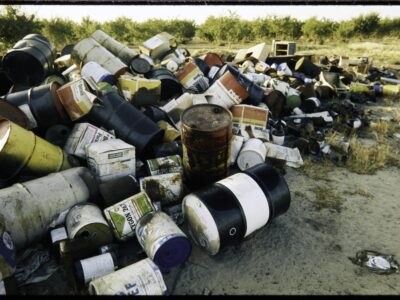The Future of California’s Greenhouse Gas Cap and Trade Program After 2020: A Conversation
Posts on Legal Planet Over the Coming Week, Linked Here, Will Address Pending California Legislation on Cap and Trade from Multiple Perspectives
This post is the preface to a series of posts by multiple authors (including guests) over the coming week (starting May 9) about the future of the state’s cap and trade program for greenhouse gases. Two bills, AB 378 and SB 775, are being debated by the environmental and environmental justice communities, and our bloggers will discuss their implications as the Legislature takes them up. The initial posts will focus heavily on SB 775, which is scheduled for an informational legislative hearing tomorrow at 9:30 am before the Senate Environmental Quality Committee. (Details for viewing a live stream are in the comments below.) I’ll continue to update links to our commentary immediately below, so please check back to this post to see the whole set.
Post #1: “California Alone” Should Not Govern State Climate Policy (Ann Carlson)
Post #5: Guest Blogger Alex Jackson: The Way Forward on Cap-and-Trade
Here’s background on the issue:
A major question in California’s greenhouse gas reduction policy is what will happen to the state’s cap-and-trade program after 2020. The state’s landmark Global Warming Solutions Act (AB 32), required our Air Resources Board to develop and implement a scoping plan to reduce state GHG levels back to 1990 levels by 2020. As part of that plan, ARB developed the trading program, which provides – through auction, or through free allocation in some cases – “allowances” to major GHG emitters to emit GHGs. Statewide, the quantity of GHG emissions from capped sectors cannot exceed the quantity allowed by the allowances. Covered emitters may buy and sell those allowances among themselves, so that the total emissions stay under the cap but can be reallocated. Some of the reductions can be achieved through purchasing “offsets,” or commitments for reductions elsewhere. Each year, the cap tightens so GHG emissions reduce. While cap and trade accounts for less than 20% of reductions of GHGs each year because of reduction efforts through other means, it is the backstop to the California program, and over time, if continued, declining caps would result in the program accounting for an increasing share of reductions over time. Under SB 32 and its companion bill AB 197, enacted last year, our GHG emissions targets have been extended to 2030, by which date a 40% reduction from 1990 levels will be required. But the cap and trade program has uncertain authorization from the Legislature after 2020.
So the big question is: what happens to the cap-and-trade program after 2020? My colleague Ann Carlson has blogged about this question before, in two posts from last fall. Most observers believe the wiser and less risky course would be for the Legislature to reauthorize the program. Any reauthorization would need a 2/3 vote in the Legislature, which is very tricky to assemble. At the same time, there has been much criticism of cap and trade by environmental justice advocates, who want to ensure they are protected against conventional pollutants and obtain maximum co-benefits from any program.
Out of all that, two major bills have emerged for this legislative session:
AB 378 (C. Garcia, Holden, and E. Garcia) would authorize an extension of the current cap-and-trade system. This bill aims to address public health concerns of communities near major sources of air pollutants by authorizing ARB to adopt specific measures that would limit or prohibit trading of carbon allowances in areas with high cumulative air pollution, and would require adoption of new emissions standards for criteria and toxic air pollutants at facilities that are part of the cap-and-trade system.
SB 775 (Wieckowski), introduced last week, would make major changes in the state’s program. It establishes a new cap-and-trade program that would cover the same entities as the existing one. But the program would be started anew, with no banked allowances from the prior (2020 and prior) market. And it would change the program in significant ways: it would incorporate both a price floor and price ceiling for allowances, prohibit the use of carbon offsets, and require that that all allowances be auctioned rather than allocated for free. The proposal would also establish a new set of uses for program auction revenue, including (among other things) per capita rebates of revenue raised from allowance auctions to all California residents.
The posts will discuss the issues raised by these bills.
Reader Comments
2 Replies to “The Future of California’s Greenhouse Gas Cap and Trade Program After 2020: A Conversation”
Comments are closed.







The “hearing tomorrow” on SB 775, according to Senator Wieckowski’s staff, will be informational only in nature. It will commence at 930am before the Senate Environmental Quality Committee. Live streaming will be here: http://www.calchannel.com/live-webcast/.
Thank you, Dan. Very helpful.I’ll adjust the post to reflect that it’s an informational hearing.